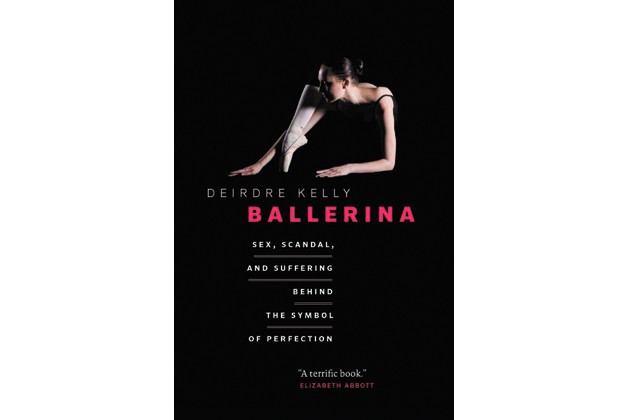Last weekend I saw Les Miserables in the movie theater, and it was ironically appropriate given the book I was reading at the time: Ballerina by Deirdre Kelly. Les Mis theatrically reveals the squalor that was the French Revolution, a period in which ballet was undergoing a great deal of development. Going to the ballet, at that time, was like going to the movies in ours. It was part of the social construct.
And…
… the lives of the dancers were pretty terrible. In order to survive, professionally and financially, they were essentially working a second job as high-brow “ladies of the night” – playing with the hearts of the aristocrats to gain housing, a nice wardrobe, and higher professional standing. Some did this willingly, and others did it to avoid the miserable (pun) life that was the working class in Paris in the 17- and 1800’s.
It was with apprehension that I started reading Ballerina, mostly because I had the inclination that Ms. Kelly and I disagree on a few points, and I already knew that the life of the early ballerina sucked. Ballerinas’ lives sucked because everyone’s lives sucked. I would have been a prostitute too if it meant getting to dance, staying off the street, and having pretty clothes, because the alternative was really, really (really) bad.
Kelly’s proclamation, in a sentence, is that ballet has changed since then. Sure it has. But is the ballerina’s life better due to the evolution of ballet, or simply because the human condition is better? People are no longer dying of consumption and typhoid living by thousands in the streets of Paris, but being a dancer is, arguably, STILL really hard.
But I’ve already stated my opinions on this.
Ballerina makes a really good case that ballet has changed for the better – not just since the French Revolution, but in the past 20 years. Our history is tainted with unfair administrations, poor working conditions, and blatant disregard for and destruction of the body that we claim is our instrument. While I have to concede that brilliant and important strides have been made in the field, it’s not enough, and frankly, I don’t know that ever will be.
“Ballerinas will probably always have to endure pain and suffering to attain ecstasy, transcendence, intoxication, flow (or whatever other term describes such peak experiences).”
As far as I’m concerned, ballet may never change completely, and it doesn’t actually have to. It’s ballet. There’s something to be said about learning same dances and combinations just as they’ve been for hundreds of years. What draws me to a ballet class is the feeling of grounding – the connection to the root of where all Western dance comes from – from the very first plié.
For anyone who watched Dance Moms last week, Holly made a pretty interesting point: Abby Lee Miller (a woman) is a tyrannical dictator who rules with an iron fist. She teaches the way she was taught. She does nothing to advance or change the field, and simply perpetuates the stereotype by reminding the general public that “everyone is replaceable”. She does a good job carrying on every bad habit that dance has ever formed. But… her dancers, given diplomacy, a nurturing environment, and a carpeted platform in the mall…. well… they weren’t as good.
So I’m torn. On the one hand, ballet is ballet. On the other, people are people, and people who chose ballet as their profession (or, as Deirdre Kelly suggests, ballet chooses them) should be offered the same working conditions, wages, and basic respect as baristas and receptionists. The ballerina courtesan of the twenty-first century might not be filling the beds of aristocrats, but they are certainly filling their coffee cups.
Deirdre Kelly effectively opens the reader’s eyes to the fact that the ballet world is not, historically, the chaste and virtuous world we once imagined it to be. Let us not continue to delude ourselves by thinking it’s changed to the point that 200 years from now someone else has to write the same shocking book about us, and on this point, Kelly and I agree:
“Motherhood, muscle building, and healthy weight gain are changes directly affecting the ballerina’s body, making it feel more in balance. But ballet is not composed of just one body; it is also a social body, a tightly knit network of human relationships where imbalances have for a long time been allowed to proliferate unchecked.”
Deirdre Kelly
I think, in the end, we approach the same opinion from different sides of the coin. Kelly claims that ballet is not perfect, but it’s changed; I claim that ballet has changed, but it’s not perfect. So maybe my glass is half empty and hers is half full, and I hope, in 20 years, Kelly’s next book is the one that proves me wrong. Either way, Ballerina is a well-written, thought provoking, fun jaunt through ballet’s darker history. It’s a great read for ballet enthusiasts and dancers, and, no doubt, eye-opening for all.
p.s.
There are still a few more days to cast your vote for Art Intercepts as the Top Dance Blog! Just leave a comment on this post (not THIS post, this post).

